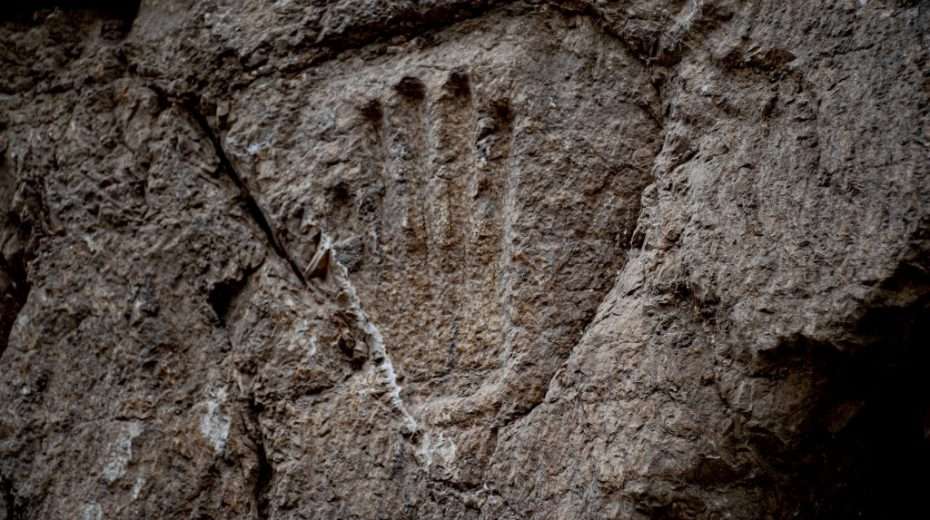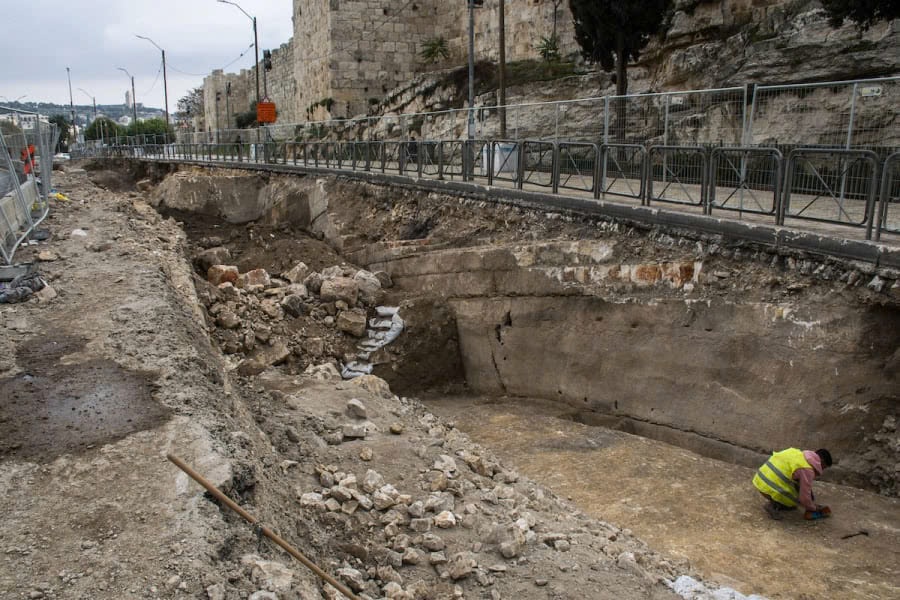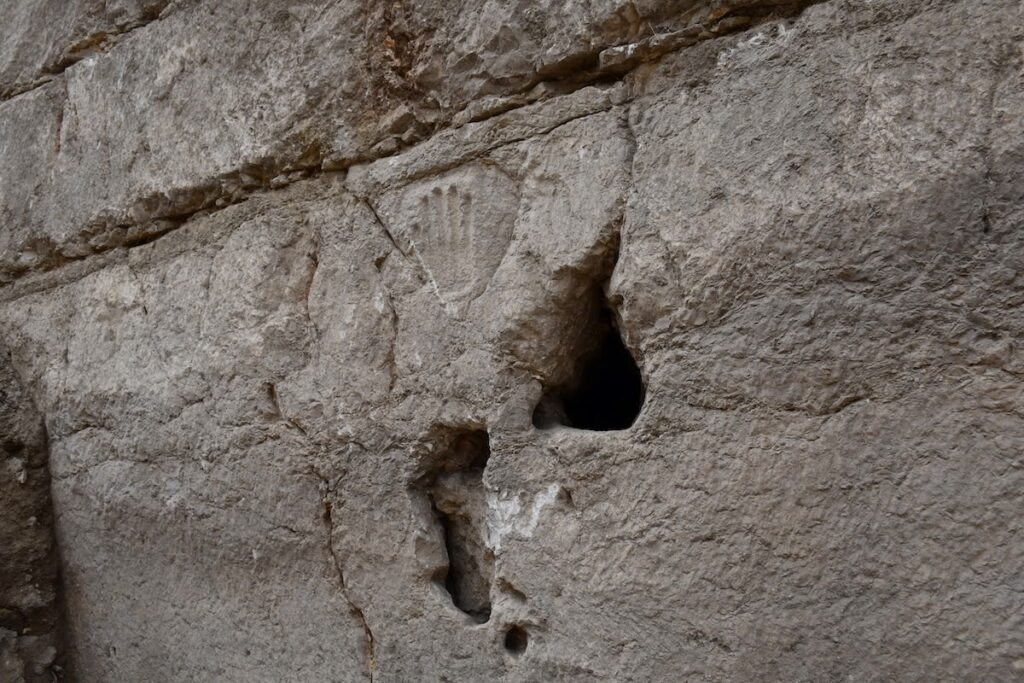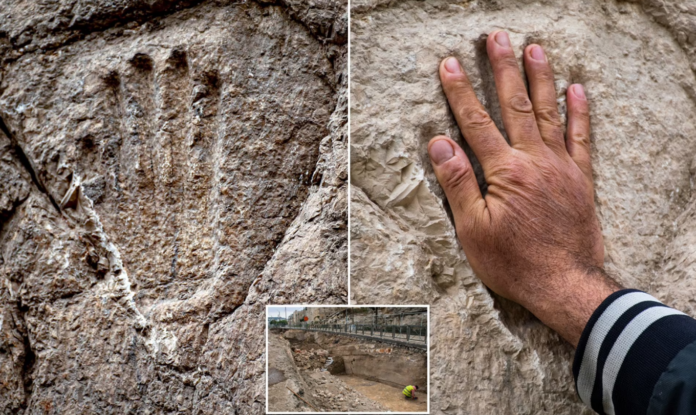Jerusalem, a city steeped in history, continues to reveal its secrets as archaeologists delve deeper into its ancient past. A recent discovery by the Israel Antiquities Authority has uncovered a 1,000-year-old defensive moat, along with a mysterious hand imprint carved into its wall. This finding not only sheds light on Jerusalem’s formidable medieval defenses but also sparks curiosity about the symbolic meanings that may lie behind these ancient imprints.
A Glimpse into the Past: The Moat That Challenged Crusaders

In a remarkable excavation along Sultan Süleyman Street, between the Damascus Gate and the Lion Gate, archaeologists have uncovered the remnants of a massive rock-hewn moat. Dating back to at least the 10th century, this moat once encircled the entire city, serving as a formidable barrier against invaders. Measuring 10 meters wide and up to 7 meters deep, it stands as a testament to the city’s resilience and strategic defense mechanisms.
Unveiling Jerusalem’s Ancient Fortifications
The moat was a key component of Jerusalem’s medieval fortifications, designed to protect the city from relentless attacks. The discovery of this structure aligns with historical accounts of the first Crusader army’s siege in 1099, where it took them five grueling weeks to breach these defenses. The moat, along with additional fortification walls, created an almost impenetrable barrier, underscoring the ingenuity of Jerusalem’s ancient engineers.
The Mysterious Hand Imprint

One of the most intriguing aspects of this discovery is the hand imprint carved into the moat wall. This enigmatic marking has captivated researchers, leading to various speculations about its purpose and significance. Some suggest it could have held symbolic meaning, while others believe it might have been an ancient prank or even a mark left by a weary laborer. Whatever its origin, the hand imprint adds a layer of mystery to the already fascinating discovery.
A Testament to Jerusalem’s Resilience

Dr. Amit Re’em, the Jerusalem regional director of the Antiquities Authority, emphasized the historical importance of this moat. Its discovery not only corroborates historical accounts but also highlights the formidable challenges faced by invaders. The defenses, including the moat and additional fortifications, were so effective that they significantly delayed the Crusaders’ advance into the city, showcasing the resilience and strategic prowess of Jerusalem’s defenders.
Beyond the Moat: A Complex Defense System

The excavation has also uncovered evidence of Jerusalem’s comprehensive defense strategy. Secret tunnels, designed to allow defenders to launch surprise attacks on enemies trapped in the moat, were part of a sophisticated system that ensured the city’s protection. These findings offer a glimpse into the complex and multifaceted defense mechanisms employed by Jerusalem’s inhabitants, adding depth to our understanding of the city’s rich historical narrative.
Conclusion
The discovery of Jerusalem’s ancient defensive moat and the mysterious hand imprint within it provides a fascinating look into the city’s medieval past. These remnants of a bygone era highlight the ingenuity and determination of Jerusalem’s inhabitants in the face of constant threats. As archaeologists continue to uncover and study these ancient defenses, each new find deepens our appreciation for the historical significance of this enduring city.
